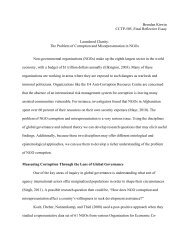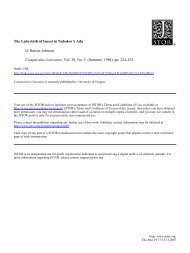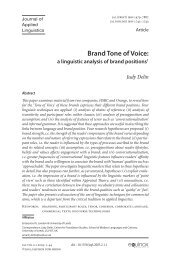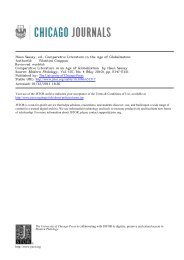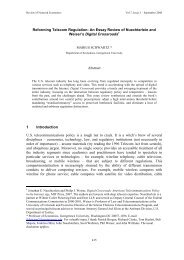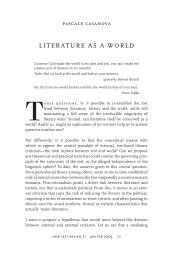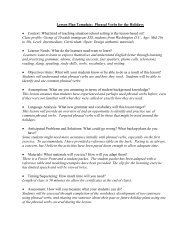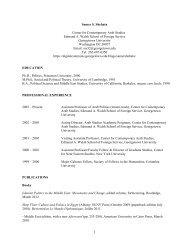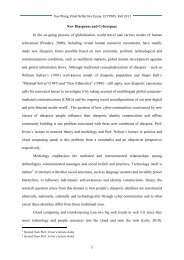roote-prokop-2013-g3-drosophila-genetics-training-all
roote-prokop-2013-g3-drosophila-genetics-training-all
roote-prokop-2013-g3-drosophila-genetics-training-all
You also want an ePaper? Increase the reach of your titles
YUMPU automatically turns print PDFs into web optimized ePapers that Google loves.
A. Prokop - A rough guide to Drosophila mating schemes 6<br />
Experiments with flies tend to take place at room temperature or at certain conventional<br />
temperatures, such as 25°C for well timed experiments (Fig. 1) or 29°C to speed up<br />
development or enhance targeted gene expression with the Gal4/UAS system (section 5.2).<br />
Figure 4. Criteria for gender selection<br />
Images show females (top) and males (bottom): lateral whole body view (left), a magnified view of the front<br />
legs (2 nd column), dorsal view (3 rd column) and ventral view (right) of the abdomen. Only males display sex<br />
combs on the first pair of legs (black arrow heads). Females are slightly larger and display dark separated<br />
stripes at the posterior tip of their abdomen, which are merged in males (curved arrows). Anal plates (white<br />
arrows) are darker and more complex in males and display a pin-like extension in females. The abdomen<br />
and anal plate are still pale in freshly eclosed males and can be mistaken as female indicators at first sight.<br />
Photos are modified from [38] and [39]. During a very short period after eclosion, females display a visible<br />
dark greenish spot in their abdomen (meconium; not shown) which is a secure indicator of virginity even if<br />
fertile males are present.<br />
To perform crosses, females and males that carry the appropriate genotypes are carefully<br />
selected. Some aspects need consideration:<br />
Males and females need to be distinguished using the criteria explained in Figure 4.<br />
Selected females have to be virgin, i.e. selected before they are randomly fertilised by sibling<br />
males in their vial of origin. To select virgins, choose vials containing many dark mature pupae<br />
from which adult flies are expected to eclose. To start the selection procedure, discard <strong>all</strong> flies<br />
from the vial and thoroughly check that <strong>all</strong> eclosed flies (including those that transiently stick to<br />
the food or w<strong>all</strong>s) have been removed or otherwise eliminated. The key rationale of this<br />
procedure is that freshly eclosed males remain sterile for a period of several hours and will not<br />
court females. Hence, after clearing vials, <strong>all</strong> females eclosed within this period will be virgin.<br />
This period lasts for 5-8 hrs at 25°C, about double the time at 18°C, and considerably longer at<br />
even lower temperatures (we use 11°C to maintain crosses up to two days for subsequent virgin<br />
collection). Therefore, a typical routine for virgin collection is to keep vials at low temperatures<br />
overnight (ide<strong>all</strong>y below 18°C) and harvest virgins first thing in the morning. During the day,<br />
they are kept at higher temperatures (to enhance the yield) and harvested again around<br />
lunchtime and early evening, before moving them back to lower temperature for the night.<br />
Flies have to be selected for the right phenotypic markers. When designing a mating<br />
scheme, combinations of markers need to be wisely chosen so that the correct genotypes of<br />
both sexes can be unequivoc<strong>all</strong>y recognised at each step of the mating scheme (often from<br />
par<strong>all</strong>el crosses). Genetic markers will be explained in section 4.2., and the rules how to choose<br />
them will become clear from later sections.<br />
To select them for gender and phenotypic markers, freshly eclosed flies are tipped from their vial<br />
onto a porous pad dispensing CO 2 . CO 2 acts as a narcotic and is not harmful if exposure is kept to a<br />
few minutes. Flies can be easily inspected on this pad under a dissection microscope (Fig. 3C-E).<br />
Selected flies are added to fresh standard vials properly labelled with gender and genotype (Fig.<br />
3B) and kept at standard temperature (room temperature or 25°C). Remaining flies are disposed of<br />
in a fly morgue (usu<strong>all</strong>y a bottle containing 70% alcohol) and never returned to their vials of origin.<br />
Some further considerations are explained in the box "Tip 2"



